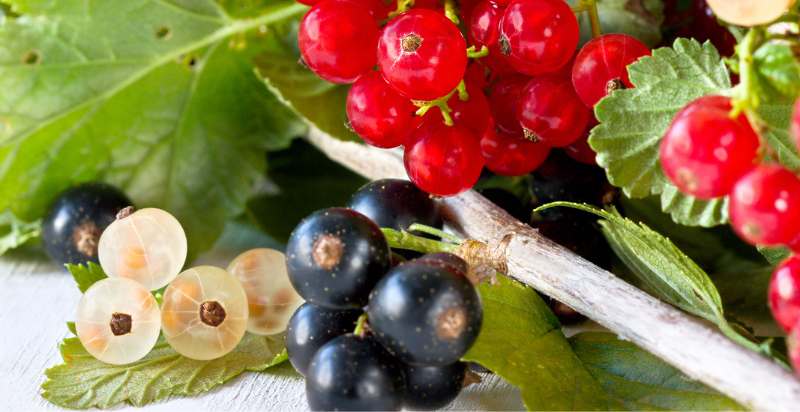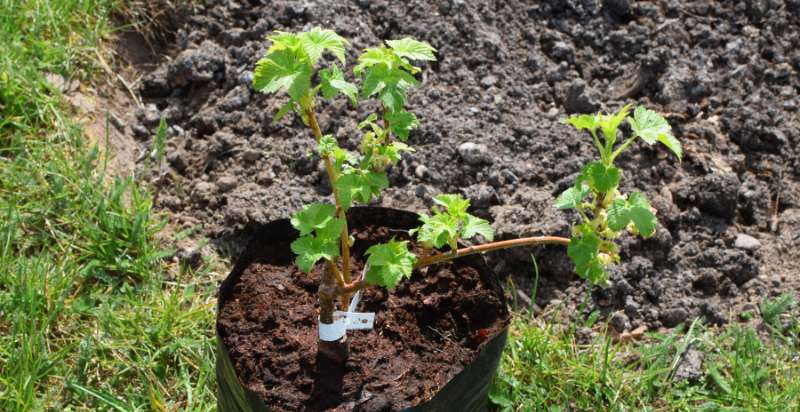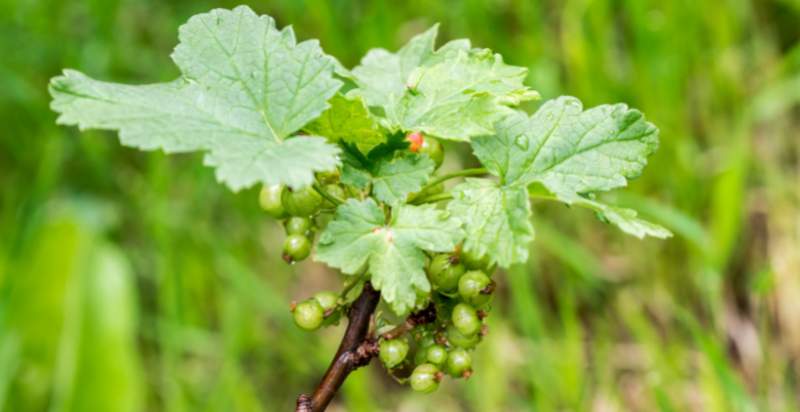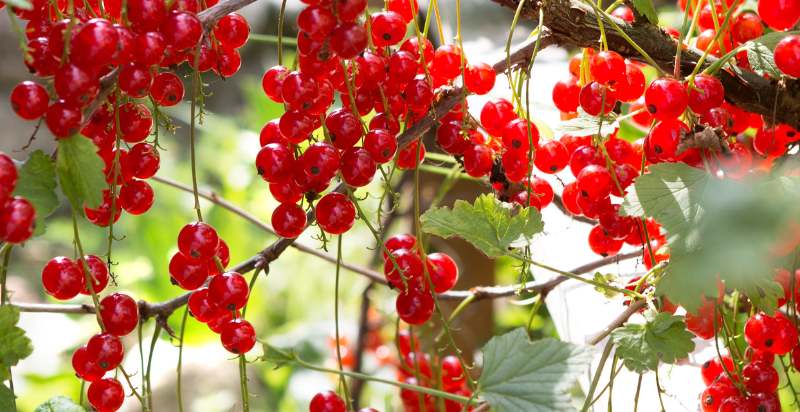Currants are small, sweet-tasting red, black, and white berries. They’re an excellent source of bioavailable antioxidants and other important nutrients like vitamins C and B and fiber. Eating currants may help lower cholesterol levels, reduce inflammation and fight off cancer cells. In addition to being a healthy snack on their own, currants can be added to various dishes for extra flavor and nutrition. Here is everything you need to know about currants and how they can benefit your health.
What are Currants?
Currants are dried, sweet berries that come in three varieties – blackcurrant, redcurrant, and white currant. They’re native to Europe but can now be found worldwide. Currants are tiny and have a slightly tart flavor when eaten raw. When cooked or dried, they become sweeter and less tart.
History and Origin of Currants:
Currants are small dried berries that have been enjoyed for centuries. They were cultivated and eaten in Ancient Greece, where they were known as ‘corinthian raisins.’ The Romans used them to flavor wine and even made a type of cake with them.
In the Middle Ages, currants were mostly grown on the island of Corfu in Greece, hence their name ‘Corinthian raisins.’ They became popular around Europe, particularly in England and France. During this period, the English referred to them as “blackcurrants” or “raisins of Corinth.”
By the 1800s, large-scale production of currants began in Germany, Russia, and the United States. California began producing currants in 1876 and is now the world’s largest producer of dried currants.
Today, currants are widely used in cooking, baking, preserves, and drinks. They add a tart sweetness to dishes, like muffins and scones, or can be enjoyed as a snack. In addition to being eaten fresh or dried, they make jams, jellies, syrups, wines, and liqueurs. Currants make great additions to sweet desserts like cakes and puddings and savory dishes such as stews and soups.
The name “currant” is derived from the Latin word for ‘raisin’ – corinthius. This is still the name for currants in many countries, including Italy and Spain.
Currants are versatile and nutritious dried fruit that has been enjoyed for centuries. They are high in fiber, vitamin C, and antioxidants, making them an excellent addition to any diet. Try adding some to your next dish!
Types of Currants:
Currants are a popular small fruit in three distinct varieties: black, red, and white.
Blackcurrants, also known as “cassis” in French, are the tartest variety of current. They are dark purple and have a strong flavor with sweet undertones. Blackcurrants can be eaten raw or cooked into jams and jellies. They are high in antioxidants and vitamin C content.
Redcurrants are the sweetest current type and are lighter in color than blackcurrants. These small round fruits have a unique tart-sweet taste that makes them great for baking or as an ingredient in sauces and desserts. Redcurrants are often used to make jellies and jams or as a topping for ice cream.
White currants are much rarer than the other two varieties and have a milder flavor than black and red currants. They can be eaten raw or used in desserts such as pies or compotes. White currants are also often made into jellies, syrups, and sauces.
No matter what type of currant you choose, they all make delicious treats! Whether you prefer the tartness of blackcurrants, the sweet-tartness of redcurrants, or the mild flavor of white currants – you won’t be disappointed with any variety.

Nutritional Value of Currants:
Currants are a great source of essential vitamins and minerals, including Vitamin C, K, manganese, and potassium. Vitamin C is important for healthy skin and bones, while vitamin K promotes overall bone health. Manganese helps the body make energy, while potassium supports healthy nerve and muscle function. Currants also contain dietary fiber, which helps regulate digestion and keep your digestive tract healthy. In addition to these essential vitamins and minerals, currants are also rich in antioxidants that can help protect cells against damage caused by free radicals.
These antioxidants may also help prevent heart disease, cancer, and other age-related diseases. Furthermore, currants contain high concentrations of anthocyanins—a type of pigment found in blueberries—which have powerful anti-inflammatory and anti-cancer properties.
Currants are an excellent source of essential vitamins, minerals, and antioxidants that can improve your overall health and well-being. They are low in calories and fat, making them a great snack or addition to a balanced diet. Their sweet flavor makes them the perfect ingredient to add to salads, smoothies, muffins, and pies—endless possibilities! So be sure to add some currants to your diet for an added boost of nutrition!
Uses of Currants:
Currants are an essential ingredient in the world of cuisine, providing numerous benefits to the health and flavor of food. One of the most popular ways to use currants is as a topping for cakes and desserts, such as blackberry cobblers or cherry pies. Currant jelly can be made from freshly picked fruit and spread on toast or used as a filling for pastries. Currants make excellent jams, jellies, preserves, compotes, and sauces for sweet dishes.
In savory dishes, currants add a unique tartness that pairs well with meats such as pork chops or duck breast. They can also be added to salads, soups, and stews for color and flavor contrast. Dried currants are an excellent addition to stuffing, salads, and curried dishes.
Currants can make liqueurs, such as creme de cassis or currant wine. The juice of blackcurrants is widely used for making cordials, usually served after dinner. Currants also make a delicious medicinal tea; it is said to relieve headaches and reduce fever.
Finally, currants are high in antioxidants and vitamin C, so they can be a healthy snack enjoyed on their own or added to cereal, yogurt, or oatmeal. They also freeze well if you have an abundance of fresh fruit! With so many uses for this versatile fruit, it’s easy to see why currants are popular with chefs and cooks alike.
How to Plant Currants?
Planting currants is a great way to add flavor and color to your garden. Currant plant are easy to grow, require little care, and can be harvested for jams, wine, or pies. This article will provide information about how to plant currant, including selecting the right type of bush, preparing the soil, and planting the bush properly.
Selecting the Right Variety of Currant Bush:
When selecting a currant plant, many different types are available depending on your needs. For example, if you want a sweet berry, then look for varieties such as blackcurrant (Ribes nigrum), redcurrant (Ribes rubrum), or whitecurrant (Ribes sativum). If you want a tart berry, consider gooseberry (Ribes grossularia) or jostaberry (Ribes x nidigrolaria).
Preparing the Soil:
Once you have selected the right currant plast, you must prepare the soil. Currants prefer well-drained soil that is slightly acidic with a pH of 6.0–6.5 and rich in organic matter, such as compost or manure, which can be added before planting. Dig over the area first, removing weeds, stones, or debris. Then add the compost or manure and mix it into the top 10–15 cm (4-6 inches) soil.
Planting the Currant Bush:
When planting your currant plant, make sure to dig a hole wide enough for both roots and the crown of the bush. Place the bush in the hole’s center and spread the roots evenly around it. Then fill in with soil, firming down lightly around its base. Water thoroughly at this stage to help settle it into place. Make sure to keep an eye on watering during dry periods, as currants require regular moisture for good health.
Planting currants is easy and rewarding once you have selected the right variety of bush and prepared the soil properly. Currants are ideal for any garden or backyard, with minimal care needed throughout its growth cycle. Enjoy the sweet and juicy fruits of your labor!
Check all local laws before planting any bush, as some varieties may be prohibited in your area. Also, if you are still deciding whether to select a variety, it is best to consult a horticultural professional before making a purchase.

California Currant Planting Tips:
If you live in California, there are a few things to remember when planting currants:
- Always select currant varieties that are compatible with the climate in your area. Popular varieties include blackcurrant, redcurrant, whitecurrant, and jostaberry.
- Clean water regularly during dry periods, as California has hot summers and very little rainfall.
- Planting currants in well-draining soil is best, as standing water can cause root rot.
Follow these tips for successful planting and enjoy the sweet fruits of your labor!
Additional Tips:
To ensure success in growing currants, it is important to provide them with adequate water and nutrients. Fertilize the bush in early spring with a balanced fertilizer such as 10-10-10 or 20-20-20. Also, prune any dead or diseased branches during winter dormancy, as this will help encourage new growth in the spring. Finally, keep an eye out for pests and diseases affecting your plant’s health and yield. Common culprits include aphids, mites, whitefly, and fungal diseases.
By following these tips on planting currants, you will be able to enjoy their sweet fruits for years to come.
How to Care for and Grow Currants?
To grow and care for Currants, it is important to provide them with the right soil, water, and sunlight.
- Soil: Currants prefer loose, well-drained soil rich in organic matter. The pH of the soil should be slightly acidic (about 6.0 – 6.5). If your soil doesn’t meet these requirements, you can add fertilizer or compost to help improve the condition of the soil.
- Water: When growing currants, keep the soil moist but not soggy. During dry periods, water deeply once a week so that the water reaches down into the root zone. Make sure not to overwater, as this can lead to root rot.
- Sunlight: Currants require at least 6 hours of direct sunlight each day to produce fruit. If your location does not receive enough sun, you can use artificial lighting to supplement the natural light.
- Pruning and Maintenance: To keep your currant plants healthy and productive, it is important to prune them regularly. Start by removing dead or diseased branches as soon as you spot them, then thin out any overcrowded areas. This will help improve air circulation and allow more light to reach all parts of the bush. For best results, it is also recommended that you mulch around the base of the plants during hotter months to protect the roots from excessive heat and moisture.
- Harvesting: You can begin harvesting currants when the fruit is ripe, which may vary depending on the variety. To test for ripeness, gently pinch one of the berries with your fingers. If it easily comes away from the stem and has a deep color, it is ready to be picked. Carefully remove each berry from its stem and store them in an airtight container in the refrigerator until you are ready to use them.
Finally, while Currants are relatively low-maintenance plants, they require regular care and attention to thrive and produce delicious fruit! With a little effort and dedication, you will soon have a bountiful harvest of sweet, juicy currants.
Enjoy!

Preventions from Pests and Diseases of Currants:
Currants are relatively resistant to many common pests and diseases, but certain preventive measures can help keep your bushes healthy.
- Plant currant bushes in an area with good air circulation. This will help prevent fungal disease from developing in the bush.
- Regularly inspect your currant bushes for signs of any pests or diseases. If you find an issue, address it immediately, as these problems can spread quickly throughout a bush and other plants in the garden.
- Prune your currants regularly to keep the bush open and promote better air circulation, reducing the risk of fungus developing on the plants.
- Remove any diseased leaves or shoots that may appear during the inspection and dispose of them in the garbage, not in your compost pile.
- Provide 1 to 2 inches of water per week during dry periods and avoid heavy, frequent watering, which can create a moist environment that encourages disease.
- Apply a fungicide or insecticide, if necessary, according to the instructions on the label. Be sure to apply these treatments when the plant is dormant in winter.
- Apply organic mulch around your currant bushes, such as wood chips or bark, to help keep weeds down and conserve moisture in the soil. This will also reduce the splashing of dirt onto the leaves and stems, which could spread disease.
- Regularly clean up fallen leaves at the base of your currant bush, as this can provide a breeding ground for pests and diseases.
These preventative measures can help keep your currant bushes healthy and free of pests or diseases.

How to Harvest Currants?
- Choose currant plants at least 3 years old for harvesting, as these will produce the best fruit.
- Prune away any diseased or dead branches before you harvest to help avoid spreading disease from plant to plant.
- Wait until the berries have turned a deep red color and are slightly soft when you pinch them between your fingers-this is when they are ready to be picked.
- 4Gently pluck each cluster of berries off their stems using your fingertips and place them into a container or basket as you pick them, taking care not to crush the delicate fruits.
- Rinse off fresh-picked currants with cool water, then spread them out on a towel to dry.
How to Store Currants?
When storing currants, it is important to choose the right storage container. Currants should be stored in a covered container that allows for some air circulation. Glass jars, plastic bags, or other breathable containers are all good options for storing currants.
Ensure the container is clean and dry before adding the currants. As you store them, try to keep them away from any heat or light sources, as this can cause them to spoil more quickly than usual. If there isn’t enough room in your refrigerator, you can also place the container of currants in a cool pantry or cupboard.
Once opened, currants should be used within a few days but will last up to a few weeks if stored correctly. If you have leftovers, tightly seal the container and store it in the refrigerator or pantry.
It is also important to regularly check your currants for signs of mold or spoilage, as these can occur quickly if not stored properly. If you notice any signs that the currants are no longer good, discard them immediately.
Storing currants correctly can keep them fresh for longer and ensure they still taste great when ready to use them.
How to Use Currants?
Currants are small, sweet, dried fruits that can be used in various recipes. They have an intense flavor, and their dark color adds a nice contrast to many dishes.
To use currants in your cooking, start by soaking them in warm water for about 20 minutes before adding them to your dish. This will help soften the fruit and rehydrate it, making it easier to work with. Once soaked, you can use currants in salads or cooked dishes such as casseroles, stews, and baked goods. If using them raw, ensure they are cooled completely before adding them to your recipe.
When baking with currants, you can add them directly into the batter or fold them at the end. Currants are a great alternative to raisins or cranberries for cookies, cakes, and quick bread that call for dried fruit. You can also use them as a topping for desserts like crisps and cobblers.
In savory dishes, currants pair especially well with roasted vegetables such as potatoes and carrots and meats like pork chops and lamb. If you add currants to soups or stews, wait until near the end of cooking, so they don’t become mushy.
Currants are a great way to add flavor, texture, and color to many dishes. Whether baking or cooking savory dishes, adding currants will bring an extra layer of complexity and sweetness.
Potential Risks from Currants:
While currants are generally considered safe when eaten in moderation, some potential risks are associated with them.
One of the biggest risks is allergies. Currants may cause an allergic reaction in people sensitive to plant proteins found in their skin, seeds, and leaves. People with pollen allergies or asthma may more likely experience an allergic reaction to currants.
In addition, it’s important to note that eating large amounts of currants can lead to a laxative effect due to their high content of naturally occurring sorbitol. Eating too many currants can also lead to stomach cramps and bloating.
Finally, as with any dried fruit, it’s important to be aware of the possibility of contamination from mold, fungus, or pests. Inspect currants before eating them and discard any that look spoiled or discolored.
Overall, currants are a healthy snack option when eaten in moderation. Just watch for signs of spoilage and watch your portion sizes so that you don’t experience any unwanted side effects.
Conclusion:
Currants are delicious dried fruit with a unique sweet flavor. They can be enjoyed as a snack or used in baking and cooking recipes. However, it is important to practice safe storage methods to prevent them from spoiling quickly and pay attention to possible allergic reactions and other side effects. Eating them in moderation and inspecting them carefully is the best way to enjoy these flavorful little fruits.
Following these simple guidelines, you can safely add currants to your meals and snacks for an extra layer of flavor, texture, and color.
- Everything You Wanted to Know About Red Tamarillos - June 2, 2025
- A Guide to Tulips: Everything You Need to Know & More… - June 2, 2025
- Guanabana: Description, Flavor, Benefits, And Uses - May 27, 2025

3 thoughts on “What are Currants? How to Plant, Grow, and Harvest Currants ”
Comments are closed.